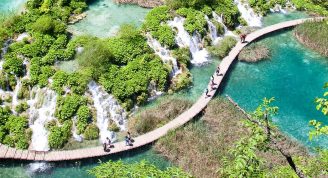Description
Climb aboard for a 17-day adventure cruise of the unforgettable Galapagos Islands. Sail from Santa Cruz to the islands of Isabella, Floreana, Espanola, North Seymour and more, taking in diverse landscapes that range from lava flows to sands of green, red and white. Spend days exploring the archipelago that a young Charles Darwin called ‘a little world within itself’, and evenings sipping cocktails on the deck while watching the sunset. This unique part of the world is full of beautiful surprises, and this tour gives you the time to see them all.
Trip Name
Grand Galapagos (Grand Queen Beatriz)
Last Updated
2024-08-07
Days
17
Capacity
16
Highlights
- Jump aboard the ultimate Galapagos exploration on the most comprehensive voyage, taking in both popular destinations and lesser-known treats.
- Encounter spectacular wildlife, both on land and underwater. You can expect to see giant tortoises, sea lions, sea turtles, plus a variety of iguanas, birds and sharks.
- Scrambling over hardened lava, hiking through cacti forests, and snorkelling in an eroded volcanic cone – this trip is one for the explorers.
- Discover otherworldly landscapes. From arid shrubbery decorated with technicolour iguanas to rich underwater ecosystems where turtles and sharks nest among colourful fish and crabs.
- Enjoy the company and guidance of a passionate local naturalist during your excursions on land, gaining insight into the flora, fauna and history of the islands.
- By travelling on this trip, you’ll learn about our Intrepid Foundation partner, The Galapagos Conservancy. Donations support their Women in Sustainable Entrepreneurship (WISE) program, providing capital for sustainability initiatives and empowering female entrepreneurs in the Galapagos. Intrepid will double the impact by dollar-matching all post-trip donations made to The Intrepid Foundation.

















